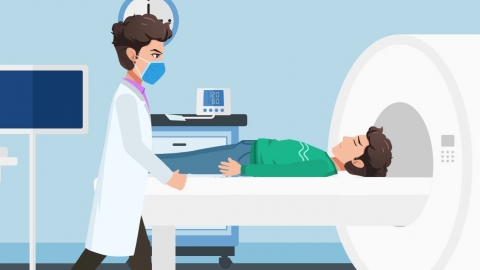How to diagnose the causes of asymmetric lateral ventricles
The causes of asymmetrical lateral ventricles can generally be diagnosed through cranial CT scans, cranial magnetic resonance imaging (MRI), cerebral angiography, neurological physical examinations, genetic testing, and other methods. If discomfort symptoms occur, it is recommended to seek medical attention at a hospital promptly and follow medical advice for appropriate management.

1. Cranial CT Scan: Using X-ray computed tomography to clearly visualize brain structures, this method directly displays the morphology and size of bilateral ventricles. It can detect ventricular enlargement, narrowing, or other space-occupying lesions, providing an initial assessment of whether the asymmetry stems from congenital developmental abnormalities, brain atrophy, hydrocephalus, and similar conditions. This method is important for rapid screening of intracranial pathologies.
2. Cranial Magnetic Resonance Imaging (MRI): Utilizing magnetic resonance phenomena to obtain detailed brain images, MRI offers high soft-tissue resolution and enables more precise observation of white and gray matter surrounding the ventricles. It can detect subtle structural brain changes, such as white matter lesions or demyelinating diseases, helping to clarify the underlying cause of ventricular asymmetry, especially for lesions not easily detected by CT.
3. Cerebral Angiography: This procedure involves injecting contrast agent into cerebral blood vessels and using X-rays to observe vascular morphology, distribution, and blood flow. It helps identify vascular abnormalities such as arteriovenous malformations, stenosis, or occlusion, which may affect cerebrospinal fluid circulation and lead to ventricular asymmetry, thereby providing vascular evidence for diagnosis.
4. Neurological Physical Examination: Physicians conduct a comprehensive neurological assessment, including evaluating muscle strength, muscle tone, reflexes, and sensory function. If localized neurological signs are present, such as motor impairments or sensory abnormalities, combined with ventricular asymmetry, this can assist in determining whether the asymmetry is due to cerebral nerve damage or pathology, thus guiding etiological diagnosis.
5. Genetic Testing: For patients suspected of having congenital hereditary factors causing ventricular asymmetry, genetic testing can help identify relevant gene mutations. Certain genetic disorders may affect brain development, resulting in abnormal ventricular morphology. Identifying specific genetic defects can provide a hereditary explanation for ventricular asymmetry, offering important information for diagnosis and subsequent genetic counseling.
It is recommended that examinations be conducted under a physician's guidance, with proper preparation beforehand to avoid compromising the accuracy of test results.




